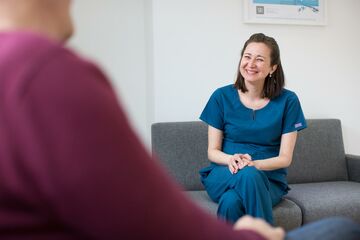Losing a baby tooth is part of growing up and is a big milestone in your child’s life. Today we’re going to talk about what to expect and how to handle it as a parent.

Losing a tooth is a natural part of growing up but it’s still a big milestone in your little one's life. Usually, most kids are super excited to have a wobbly tooth because they take it as a sign that they’re growing up; and thankfully the process usually isn’t too painful. That being said, when it inevitably happens, it’s important that you know how to look after their gums properly and the new big tooth that will soon pop through. So, let’s talk about what to expect and how to handle this memorable time.
First in, first out
Baby teeth typically begin to loosen as their roots dissolve and the permanent tooth underneath starts pushing through. Children should have 20 baby or primary teeth in total, all of which have usually made an appearance by the age of 3.
As a general rule of thumb, baby teeth tend to fall out in pretty much the same order that they first came in. This means that the lower front teeth are usually the first to say goodbye at around the age of 6 or 7 years old, followed closely by the front upper pair – but remember, this isn’t a hard, fast guideline. Generally speaking, the younger your child was when their teeth first popped through, the earlier they’ll probably start to fall out.
FACT – Although it's quite a rare occurrence, adult teeth can sometimes break through the gums before the baby teeth have fallen out, creating two separate rows of teeth which are commonly referred to as 'shark teeth'. Usually the primary teeth can be wiggled out, but if they refuse to budge you may need to consult your child's dentist.
Out with the old and in with the new

Once your little one has a wobbly tooth, encourage them to give it a gentle wiggle but remind them not to try and yank it out before it’s ready! After the tooth is lost the gum may bleed slightly but don’t worry, that’s normal. It’s a good idea to get your child to swish their mouth around with warm salty water and if it still continues to bleed, have them bite down on a gauze or clean towel. The bleeding should have cleared up within an hour.
It can take a while for the new permanent tooth to show itself and when it does, don’t worry if you think that it looks a little too large for your child’s face – their head will keep growing but the tooth won’t, so everything should balance out nicely in time. You’ll probably notice as well that the new teeth are not as white as the previous baby teeth (which is normal) and that they have more pronounced ridges; but this is only because they haven’t been used for biting yet!
REMEMBER - The most important point of all is to help your child take extra good care of their new permanent teeth to make sure they stay just that, permanent. These are the teeth that they’ll need to keep for the rest of their lives!
Do you have any more questions about your little one's teeth? Feel free to call us today on 01530 272 264 to make an appointment. We’d love to chat though any concerns you may have and help put your mind at ease.





